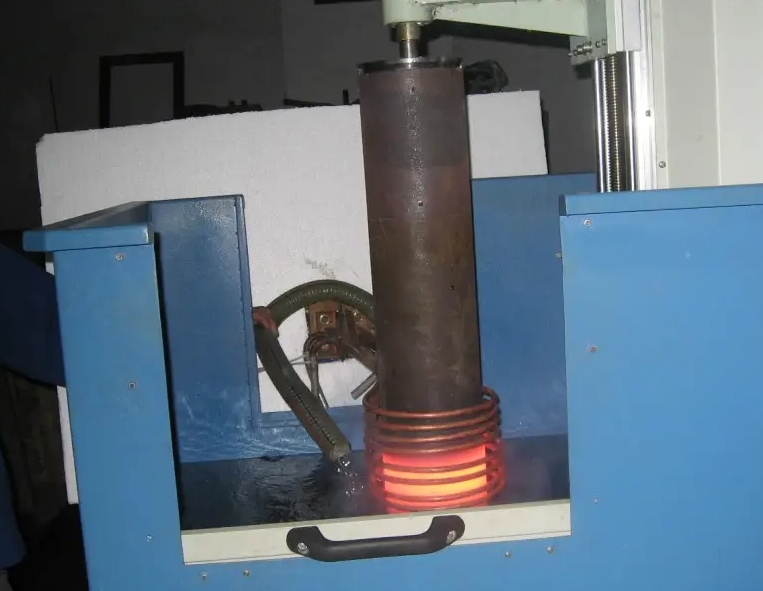- 01
- Mar
Common faults and corresponding solutions of high frequency quenching equipment
Common faults and corresponding solutions of high frequency quenching equipment
1. Fault phenomenon The equipment is running normally, but many KP thyristors and fast fuses are burned during the normal overcurrent protection action. In order to release the energy of the smoothing reactor to the power grid during overcurrent protection, the rectifier bridge changes from the rectification state to the inverter state. At this time, if α=150?, it may cause the active inverter to overturn and burn the multiple thyristors and fast fuse. , the switch trips, and there is a huge current short-circuit explosion sound, which produces a large current and electromagnetic force impact on the transformer, which will damage the transformer in serious cases.
2. Fault phenomenon The high-frequency quenching equipment is running normally, but the equipment is unstable near a certain point in the high-voltage area, the DC voltmeter is shaking, and the equipment is accompanied by squeaking sounds. This situation is very likely to cause the inverter bridge to overturn and burn the thyristor. . This kind of fault is more difficult to rule out, and it mostly occurs when a certain part of the equipment sparks under high pressure:
(1) The loose screws of the copper bar joints cause ignition;
(2) Oxidation of the main joint of the circuit breaker leads to ignition;
(3) The screw of the compensation capacitor wiring pile is loose, causing the internal discharge resistance capacitor of the ignition compensation capacitor to ignite the absorption capacitor;
(4) The insulation part of the water-cooled radiator is too dirty or carbonized to the ground;
(5) The induction coil of the furnace body is opposite to the furnace shell furnace. The interval between turns of the induction coil of the furnace body is too close, and the insulating column of the induction coil of the fixed furnace body is ignited due to high temperature carbonization discharge.
(6) Internal ignition of the thyristor.
3. Fault phenomenon The high-frequency quenching equipment is running normally, but a sharp beep-beep can be heard from time to time, and the DC voltmeter slightly oscillates. Using an oscilloscope to observe the voltage waveform across the DC terminals of the inverter bridge, it can be seen that the period of the inverter is short, one cycle fails or a short period of indefinite period fails, and the parallel resonant inverter circuit fails for a short period of time and can self-recover with a short period, and the failure is generally the inverter control. Part of it is disturbed by the rectifier pulse, and the aperiodic short-term failure is generally caused by the poor insulation between the turns of the intermediate frequency transformer.
4. Fault phenomenon After the high-frequency quenching equipment has been running normally for a period of time, the equipment has abnormal sound, and the meter reading shakes and the equipment is unstable. After the equipment has been working for a period of time, abnormal noise occurs and the operation is unstable, mainly because the thermal characteristics of the electrical components of the equipment are not good. The electrical part of the equipment can be divided into two parts: weak current and strong current, and the control part can be detected separately to prevent damage. When the main circuit power device is not connected to the main power switch, only the power supply of the control part is turned on. After the control part works for a period of time, use an oscilloscope to detect the trigger pulse of the control board to see whether the trigger pulse is normal.
On the premise of confirming that there is no problem in the control part, turn on the equipment, and after the abnormal phenomenon occurs, observe the voltage drop waveform of each thyristor with an oscilloscope, and find out the thyristor with poor thermal characteristics; if the voltage drop waveform of the thyristor is All are normal. At this time, we should pay attention to whether there are problems with other electrical components, and pay special attention to circuit breakers, capacitors, reactors, copper bar contacts and main transformers.

